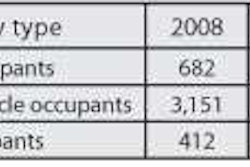The U.S. Department of Transportation’s National Highway Traffic Safety Administration and the U.S. Environmental Protection Agency on Friday, Oct. 1, announced they will begin the process of developing tougher greenhouse gas and fuel economy standards for passenger cars and trucks built in model years 2017 through 2025. This will build on the success of the first phase of the national program covering cars from model years 2012-2016.
“We must, and we will, keep the momentum going to make sure that all motor vehicles sold in America are realizing the best fuel economy and greenhouse gas reductions possible,” says U.S. Transportation Secretary Ray LaHood. “Continuing the national program would help create a more secure energy future by reducing the nation’s dependence on oil, which has been a national objective since the first oil price shocks in the 1970s.”
The program is part of the Obama administration’s energy and climate security goals, which call for the increased domestic production and use of existing, advanced and emerging technologies to strengthen the auto industry and enhance job creation in the United States. The agencies say that continuing the national program will help make it possible for manufacturers to build a single national fleet of cars and light trucks that satisfies all federal and California standards, while ensuring that consumers have a full range of vehicle choices.
“Continuing the successful clean cars program will accelerate the environmental benefits, health protections and clean technology advances over the long term,” says EPA Administrator Lisa P. Jackson. “In addition to protecting our air and cutting fuel consumption, a clear path forward will give American automakers the certainty they need to make the right investments and promote innovations. We will continue to work with automakers, environmentalists and other stakeholders to encourage standards that reduce our addiction to foreign oil, save money for American drivers and clean up the air we breathe.”
In a May 21 memorandum, Obama directed EPA and DOT to issue a Notice of Intent (NOI) that would lay out a coordinated plan to propose regulations to extend the national program and to coordinate with the California Air Resources Board in developing a technical assessment to inform the NOI and subsequent rulemaking process. Consistent with the presidential memorandum, the NOI includes an initial assessment for a potential national program for the 2025 model year and outlines next steps for additional work the agencies will undertake.
Next steps include issuing a supplemental NOI by Nov. 30 that would include an updated analysis of possible future standards. As part of that process, the agencies will conduct additional study and meet with stakeholders to better determine what level of standards might be appropriate. The agencies aim to propose actual standards within a year.
The national program is intended to save consumers money by cutting down on fuel costs, improve U.S. energy security by reducing dependence on petroleum and protect the environment by reducing greenhouse gas pollution. According to the results of the interim technical assessment that are summarized in the NOI, the automotive industry could choose from a variety of advanced technologies to achieve further greenhouse gas reductions.
The assessment also considers the costs and effectiveness of applicable technologies, compliance flexibilities available to manufacturers, potential impacts on auto industry jobs and the infrastructure needed to support advanced technology vehicles. The assessment was developed through dialogue with automobile manufacturers and suppliers, nongovernmental organizations, state and local governments, and labor unions.












